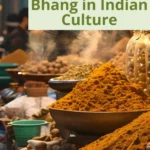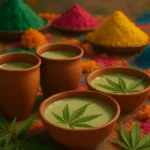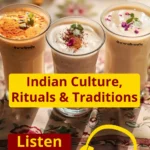Walking through Varanasi’s lively alleys, the air is filled with the enticing scent of spices. You can find special Thandai at various little stalls where locals enjoy this traditional beverage.
This invigorating beverage serves as an entryway to Bhang, a cannabis drink revered in Hindu culture. Let’s unravel the fascinating historical significance of the drink, and how it intertwines with the vibrant culture of India.
Table of Contents
The Mythological Roots of Cannabis in Hinduism
Cannabis as a Sacred Plant in the Atharvaveda
In Hinduism, cannabis holds a unique place, deeply rooted in ancient, sacred texts. The Atharvaveda, one of the four Vedas, is notable for its references to this powerful plant. Cannabis is described as a sacred herb, highlighting its spiritual importance and connection to happiness, and is linked to many rituals and ceremonies.
What contributes to the revered history of cannabis? Perhaps it is due to its diverse therapeutic properties. The Vedas identify it as one of the five sacred plants throughout India, emphasising its importance in health and spirituality. In some contexts, the use of cannabis in Indian culture represents a connection between the physical and the mystical.
Connection to Lord Shiva and the Mythology of Bhang
Cannabis is also closely connected to Lord Shiva, who is sometimes referred to as Lord of Bhang. In various stories, he consumes Bhang to enhance his meditative journeys. This substance helps him achieve a higher state of consciousness. Some believe it reflects his dual nature – both a fierce destroyer and a benevolent protector.
During Maha Shivaratri, devotees consume Bhang in honour of the deity. The ritual of Bhang drinking symbolizes liberation and a deeper connection to the divine. Could this be why the tradition still thrives today?
The Role of Bhang in Spiritual Practices and Ceremonies
It’s not solely for rituals. It plays a vital role in various spiritual practices. It is often consumed during festivals, used in offerings, or even offered to the gods. The THC cannabinoid has psychoactive properties which intoxicate and induce heightened spirituality, bringing devotees closer to their beliefs.
- Bhang and festivals: Celebrated during Holi and Maha Shivaratri.
- Ritual use: During pujas, it is offered as a symbol of devotion.
- Connection with community: Often shared among friends and family.
For many, the cannabis use transcends the physical act. It becomes a communal experience, bringing people together in shared rituals.
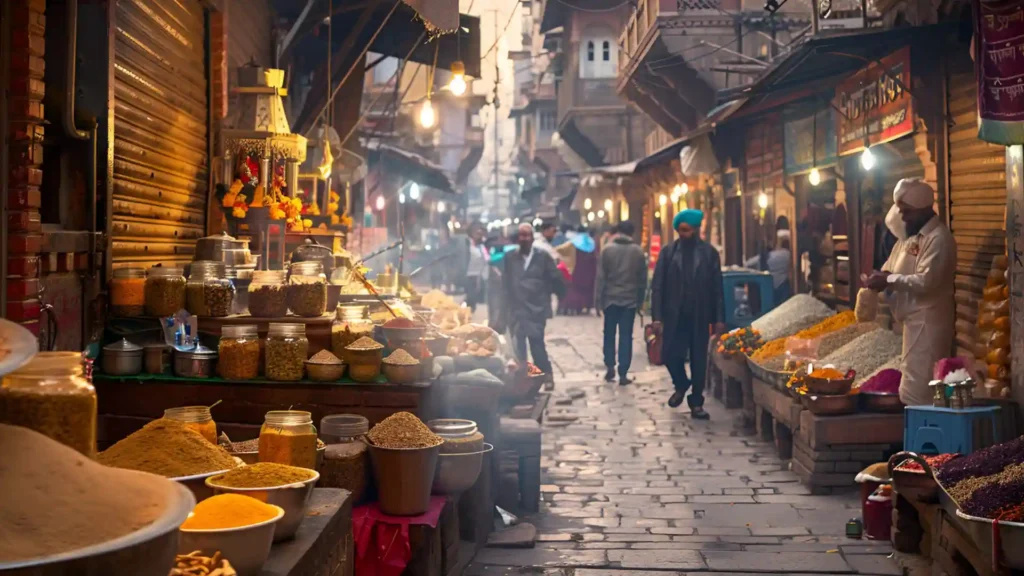
Bhang’s Cultural Impact: From Festivals to Everyday Life
The Celebration of Holi
Holi, the festival of colours, is not just about vibrant hues and laughter. It’s also a time when Bhang plays a magical role. Everybody joins in the fun, and the cannabis tea enhances the festive atmosphere. But why is it so special during Holi?
- It is made from the leaves and flowers of the cannabis plant. Traditionally, it symbolises joy and festivity.
- During the Festival of Colours, people consume cannabis-infused products, which make the celebrations even more lively. Think of it as a way to elevate the joyful spirit.
This connection is so profound that some people believe the celebrations just wouldn’t feel the same without it.
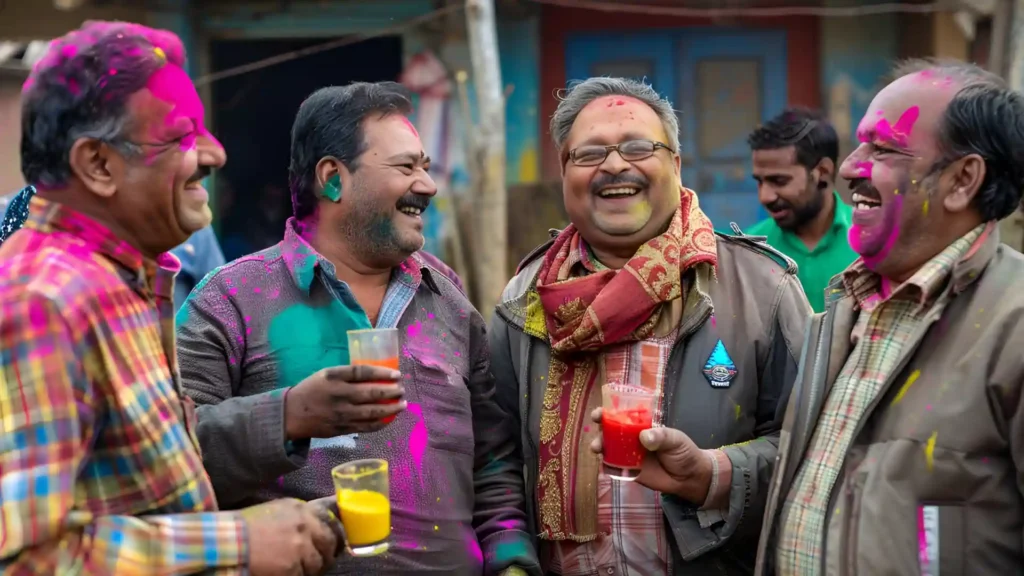
Special Thandai and Local Variations
One of the standout drinks during the Festival of Colours is Thandai. This refreshing beverage is often mixed with Bhang, adding creaminess and flavour. Local vendors take pride in offering Thandai with a unique twist. But what makes it stand out?
- Almonds, saffron, hemp seeds, and spices are often part of the mix. Each stall owner has their unique style.
- Many shops offer special Bhang Thandai, catering to those who want a little buzz in their drink.
Each stall presents its own unique version of Thandai. Every cup is a delightful mini-adventure waiting to be savoured! It’s not just a drink; it’s an experience.
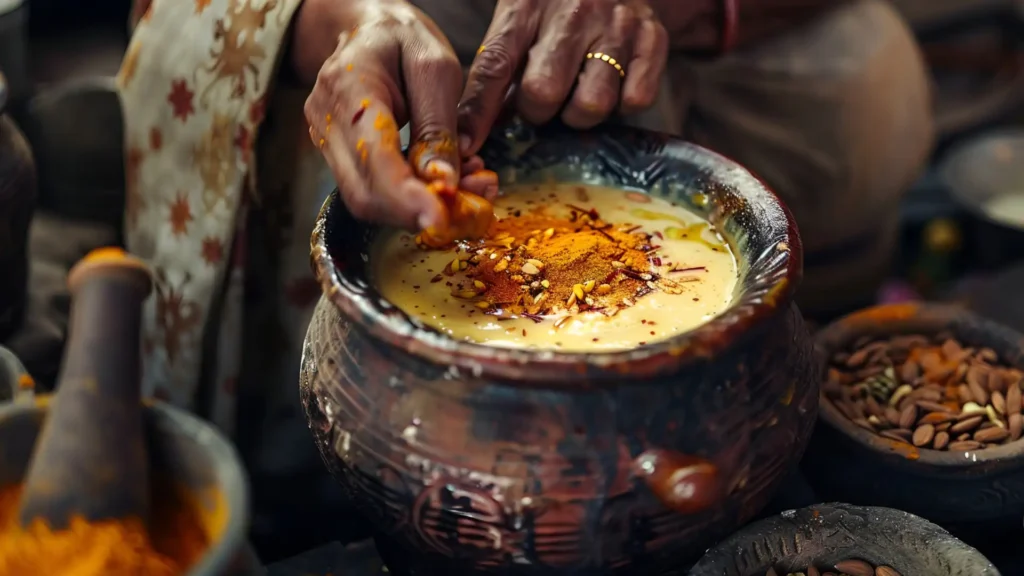
Bhang in Traditional Sweets and Snacks
Festivals are not only about drinks. The presence of Bhang in traditional sweets is unmistakable. Many families have their own special recipes. These sweets blend flavours and traditional practices.
- Bhang Laddoos and Barfis are highly sought after during celebrations. They are indeed delicious!
- Some people also use Bhang in savoury snacks. Imagine enjoying Bhang pakoras while celebrating with loved ones.
The incorporation of Bhang in these sweets speaks volumes about its cultural significance. It’s more than just a treat; it’s part of the heritage. For a modern take on cannabis edibles, try my fool-proof weed brownie recipe.
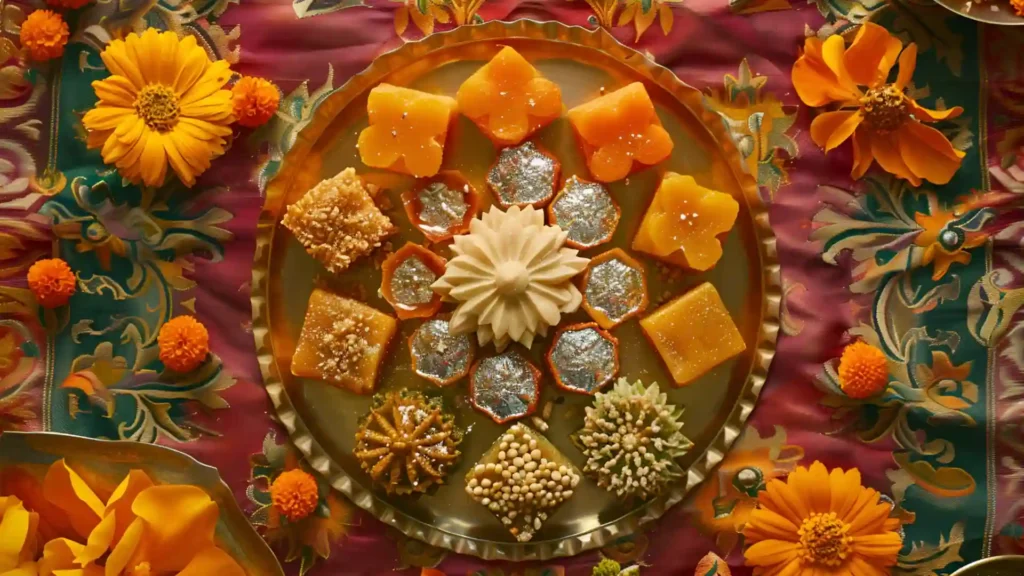
The Legal Landscape of Bhang in Modern India
India’s relationship with cannabis is complex. The Narcotic Drugs and Psychotropic Substances Act of 1985 lays the groundwork for legal regulations. This act officially classifies various substances, including cannabis. But what does that mean for Bhang?
Bhang is a traditional drink made from marijuana leaves. While the act lists cannabis under psychotropic substances, Bhang occupies a unique place. It’s legally distinguished from other marijuana like hashish. This creates an interesting scenario where Bhang is permitted for cultural and religious practices, while other forms remain illegal.
Government-Sanctioned Bhang Shops and Their Regulation
Across India, government-sanctioned Bhang shops serve up this ancient concoction. These shops are often found in areas with significant religious or cultural significance, such as Varanasi. But how are they regulated?
- Licensing: The government issues licences for Bhang shops to ensure compliance with local laws.
- Quality Control: Regulations are in place to maintain the quality of Bhang, ensuring it’s safe for consumption.
- Sales Restrictions: Sales are limited, and age restrictions apply, similar to alcohol sales to protect public health from abuse.
Despite these regulations, problems arise. Some Bhang shops operate without proper licences. This variability raises questions about accountability and safety.
Contradictions in Policy Regarding Cannabis Usage Across India
The patchwork of laws across India is perplexing. While Bhang is legal in many regions, marijuana remains illegal. This disparity creates confusion among users and law enforcement alike.
For instance, a person can enjoy Bhang during Holi but face penalties for possessing marijuana. Isn’t it strange that something revered in cultural contexts is criminalized in others?
Furthermore, some states have jumped on the legalisation bandwagon, advocating for cannabis use for medical or recreational purposes. Yet, others cling tightly to prohibition. This inconsistency mirrors the broader debate surrounding such legislation globally.
Comparisons with Other Regional Beverages
Thandai stands tall among other regional beverages. It’s often compared to Lassi, another popular drink. However, Thandai is unique in its complexity. While Lassi is primarily yogurt-based, Thandai boasts a variety of spices, nuts, and sweeteners.
- Thandai: A blend of milk, nuts, and spices.
- Lassi: Smooth and creamy, made from yogurt.
- Bhang Lassi: An infused variant, popular during Holi.
Each drink reflects its culture. Thandai resonates with celebration, while Lassi offers refreshment on hot days.

Conclusion
The journey of Bhang through India’s cultural and religious history is as intricate as the flavours of thandai itself. Bhang has been respected in ancient Vedic texts and is important in Hindu festivals like Holi and Maha Shivaratri, serving as both a spiritual aid and a cultural symbol.
Despite legal challenges and changing regulations, it remains an important part of Indian society, praised for uniting communities and enhancing traditions. Bhang remains a unique symbol of India’s vibrant heritage, blending the sacred with the social in a timeless tradition.
🎧 Listen Instead
Prefer listening? Play it here or catch it on your favourite platform:
FAQ
What is bhang and how is it made?
Bhang is a traditional Indian drink made from the leaves and sometimes the buds of the cannabis plant. The leaves are crushed and mixed with ingredients like milk, ghee, spices, and sugar to make a drink, especially popular during festivals like Holi.
Why is bhang important in Indian culture?
Bhang has a long history in India, tied to religious festivals such as Holi and Maha Shivaratri. It is often consumed as part of rituals and celebrations, and some consider it sacred, particularly in Hindu culture.
Is bhang legal in India?
Yes, in many Indian states, bhang made from cannabis leaves is legal and sold in licensed shops, especially around festival times. Other cannabis products, like resin or flower, are still banned.
What does bhang feel like?
Drinking bhang can bring on a sense of relaxation, happiness, and sometimes euphoria. Effects vary, but too much can cause dizziness or anxiety, so it is best consumed in moderation.
How is bhang different from other cannabis products?
Bhang is made from cannabis leaves, not the resin or flowers used for hashish or marijuana. This makes it less potent and generally legal, while other forms of cannabis are usually illegal in India.
Can tourists try bhang in India?
Yes, in places where it is legal, tourists can try bhang at government-licensed shops, especially during festivals. Always check local laws and be mindful of dosage.
How old is the use of cannabis in Indian history?
Cannabis use in India dates back thousands of years, with references in ancient texts and Ayurveda. It has been part of both medicinal and spiritual traditions for centuries.
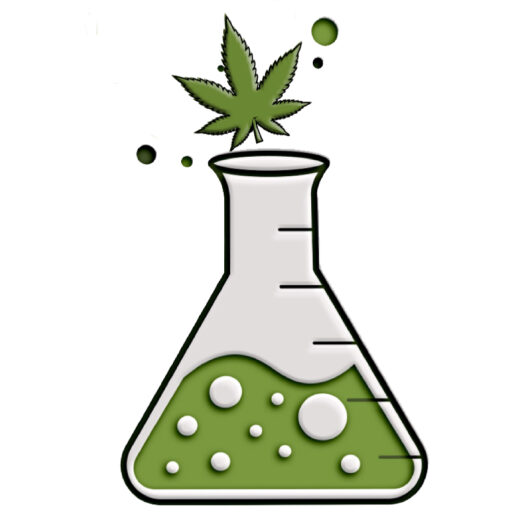
If you liked this blog post, I would love it if you shared it with a friend.
If you use Pinterest, please pin this post.
*As a POT by NOIDS affiliate, I earn from qualifying purchases.
*As an Amazon Associate, I earn from qualifying purchases.

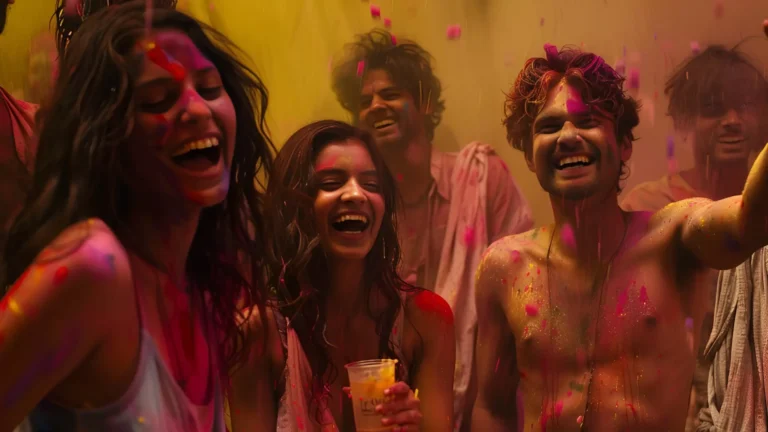
 Spotify
Spotify
